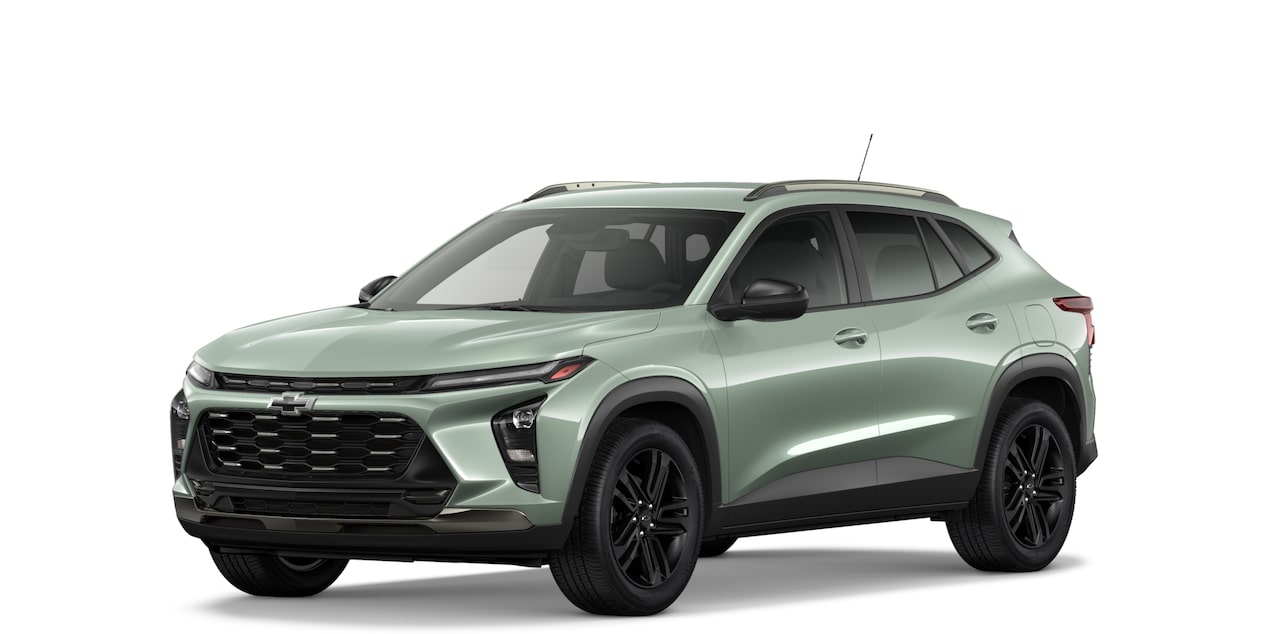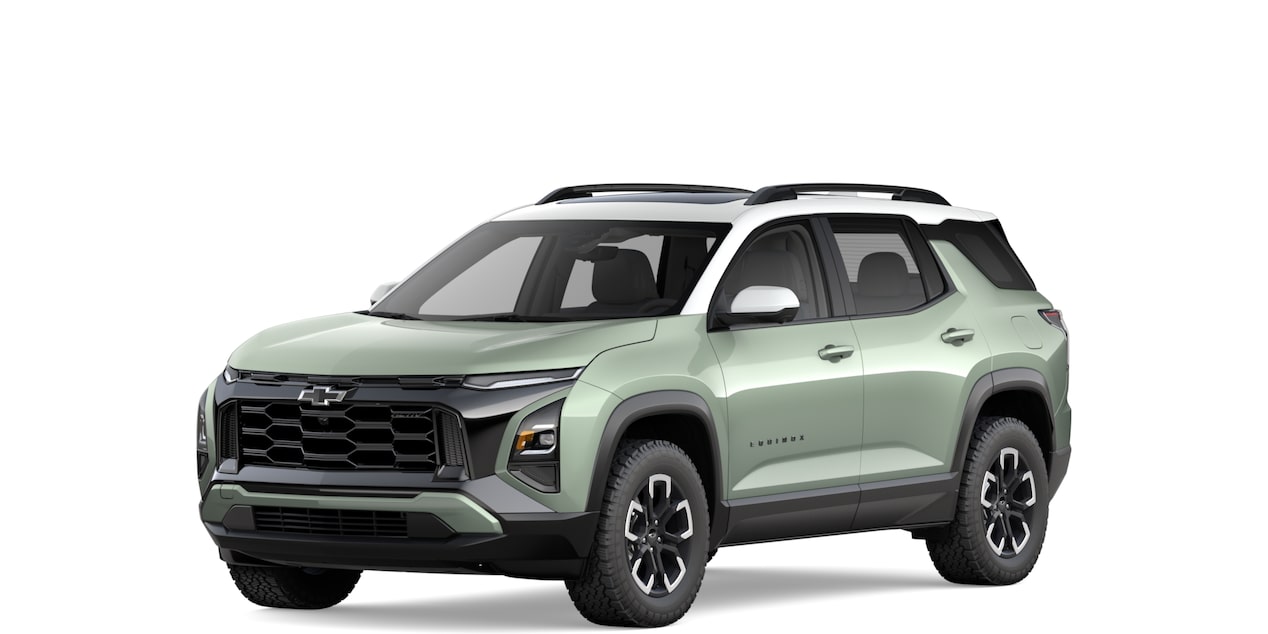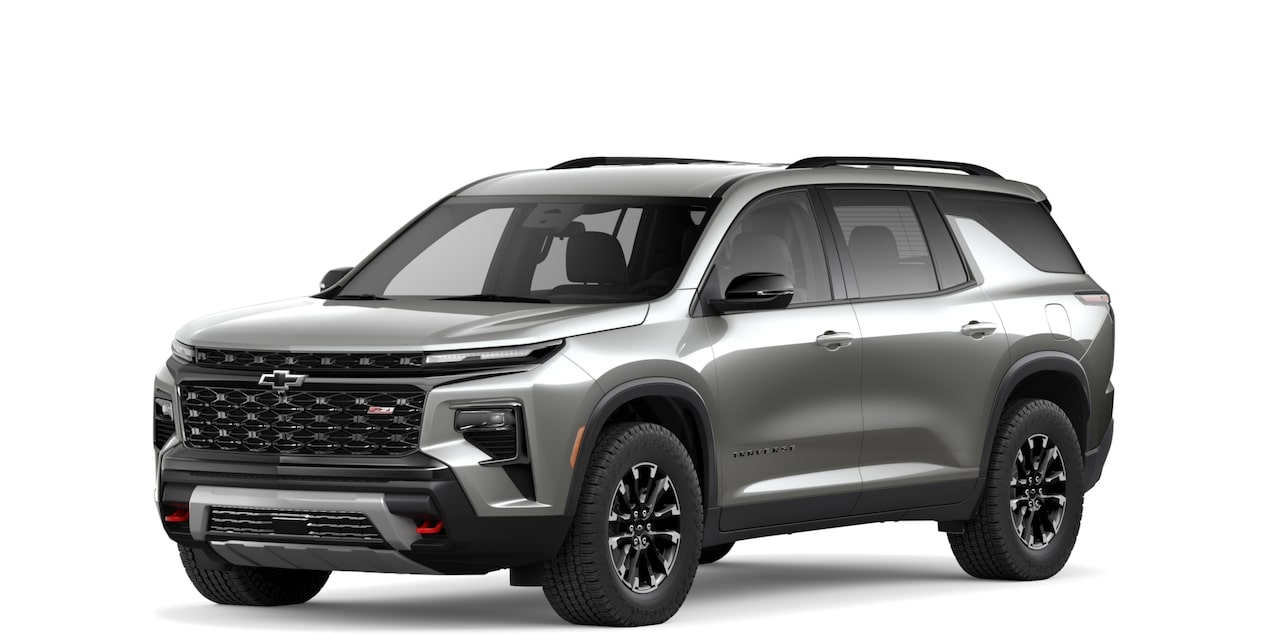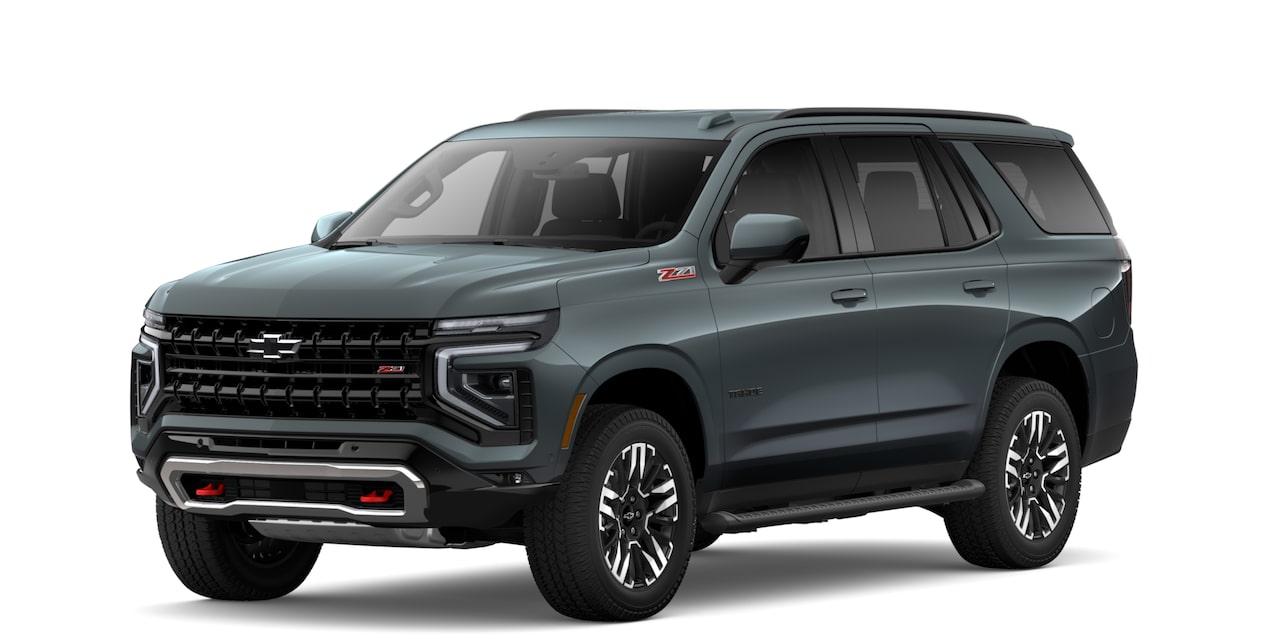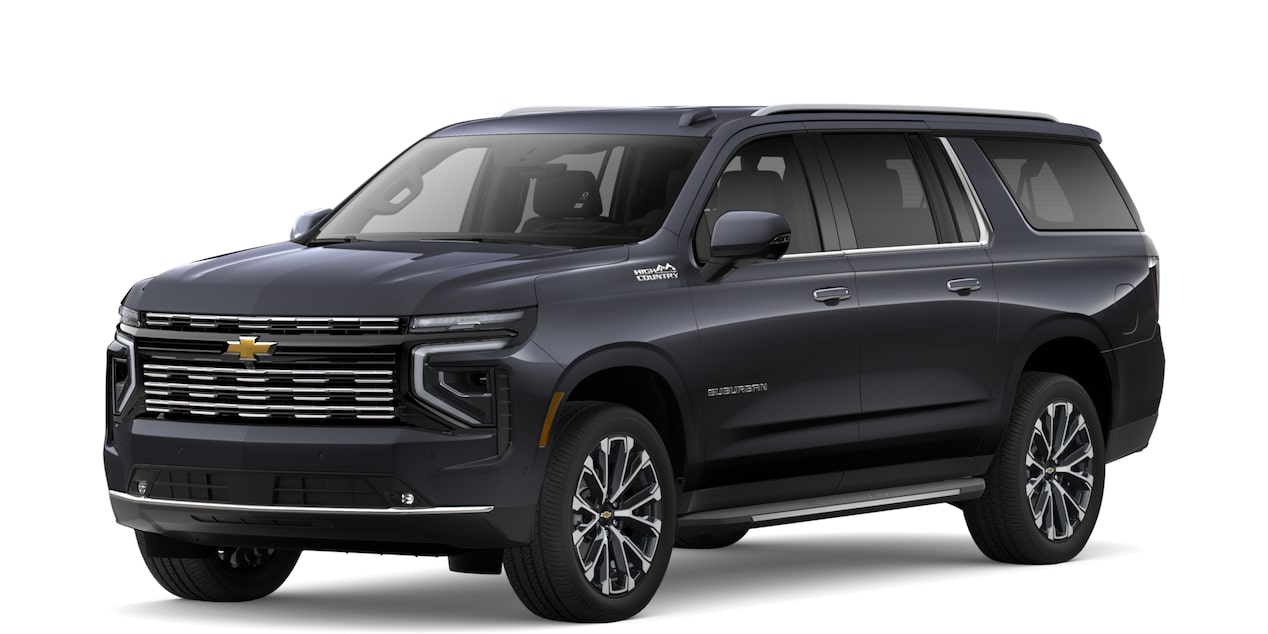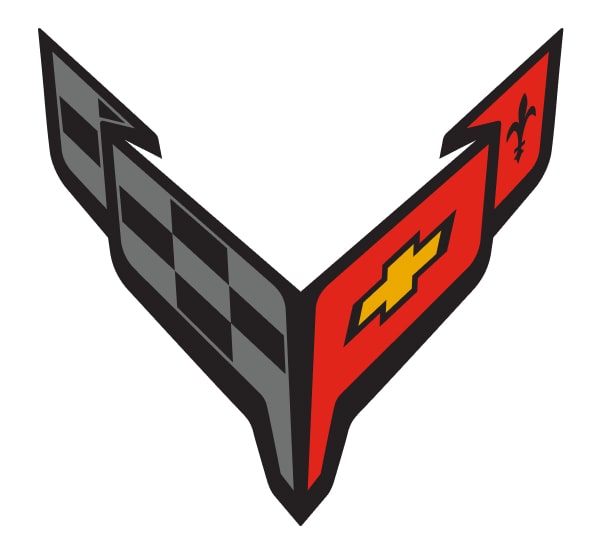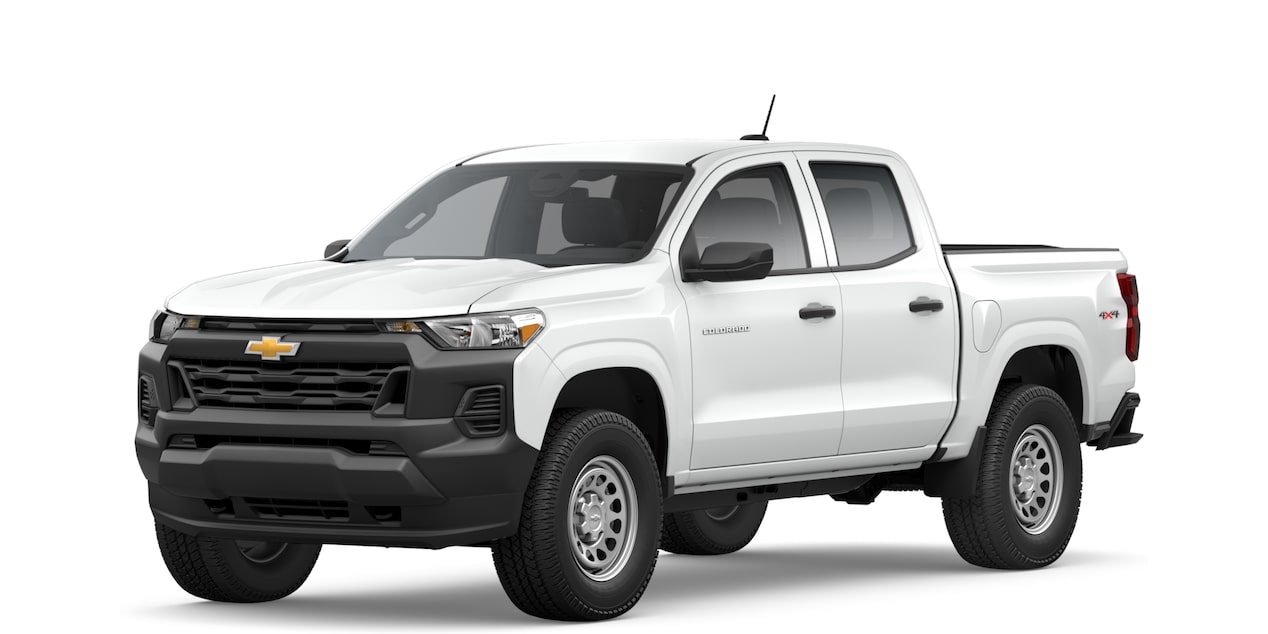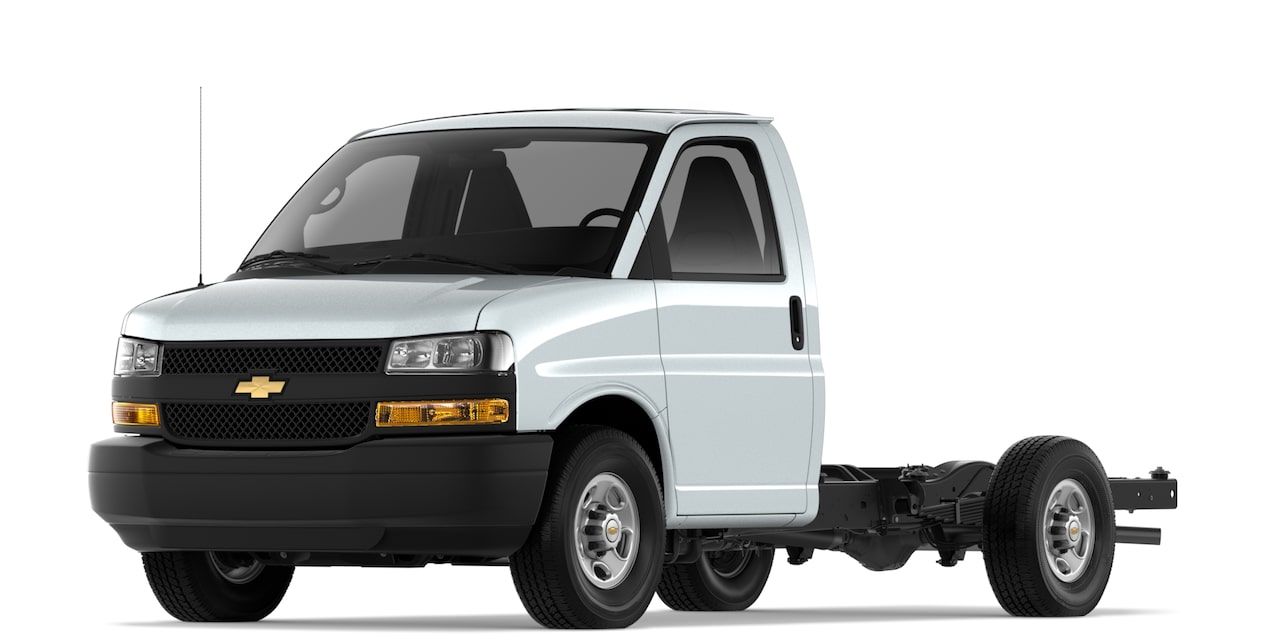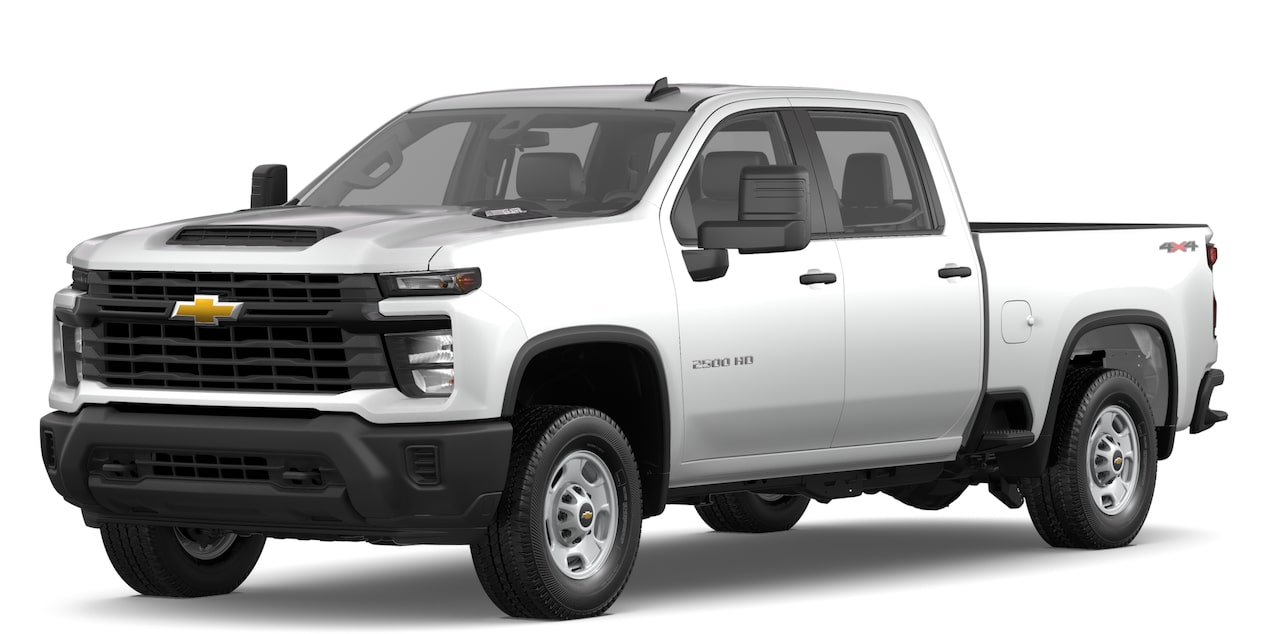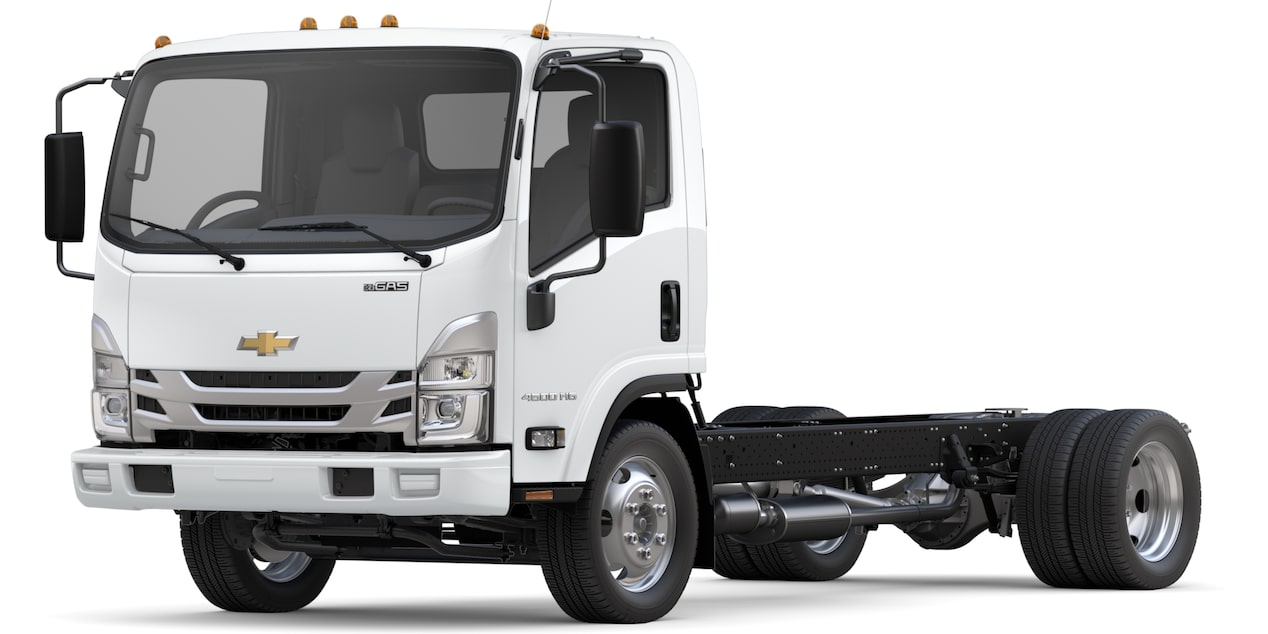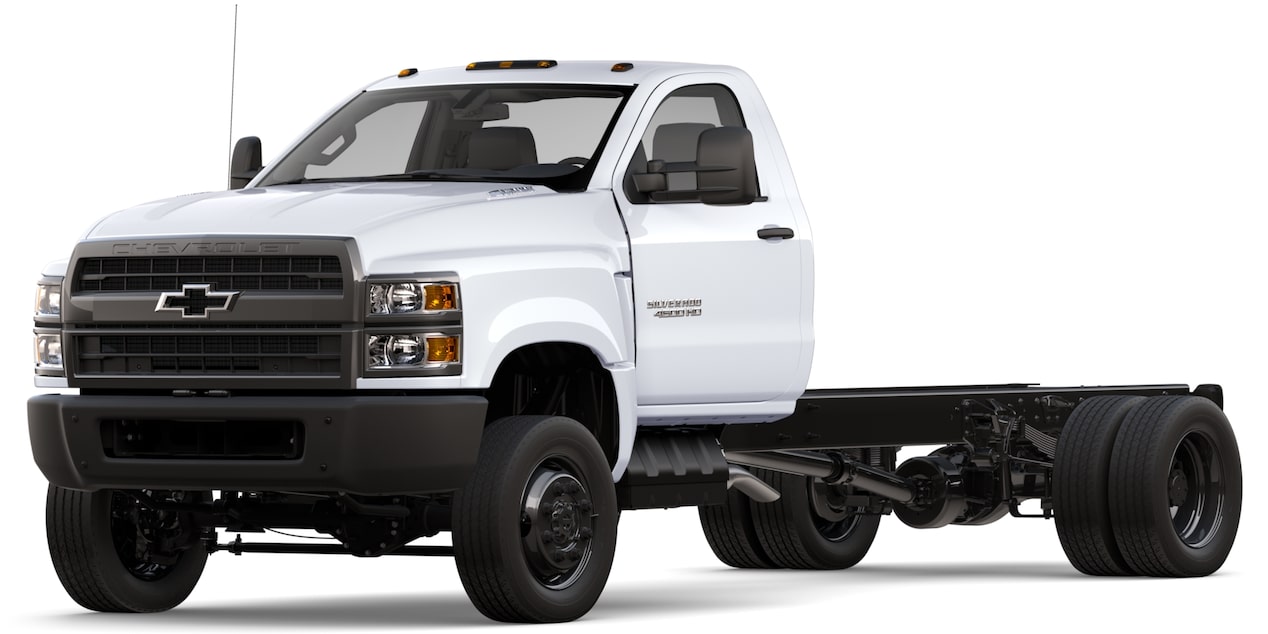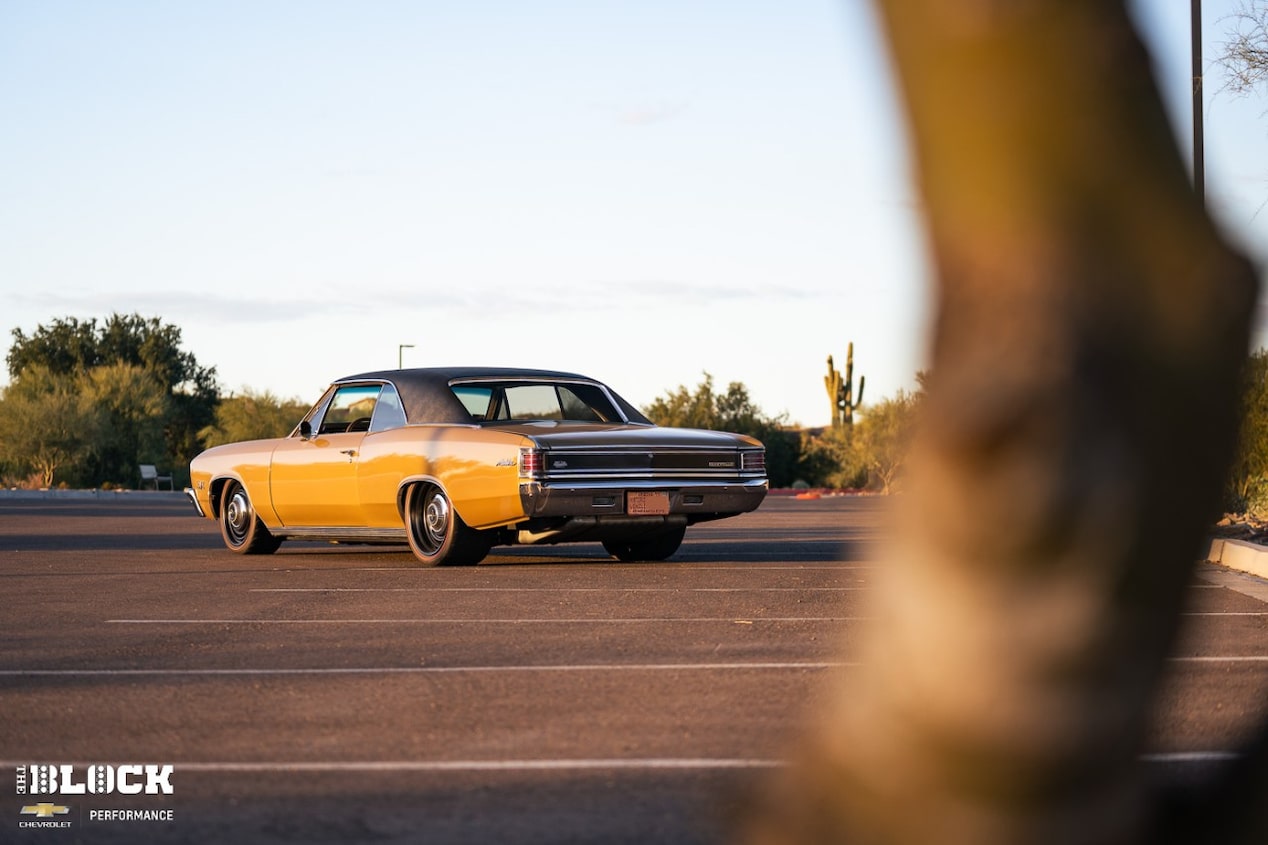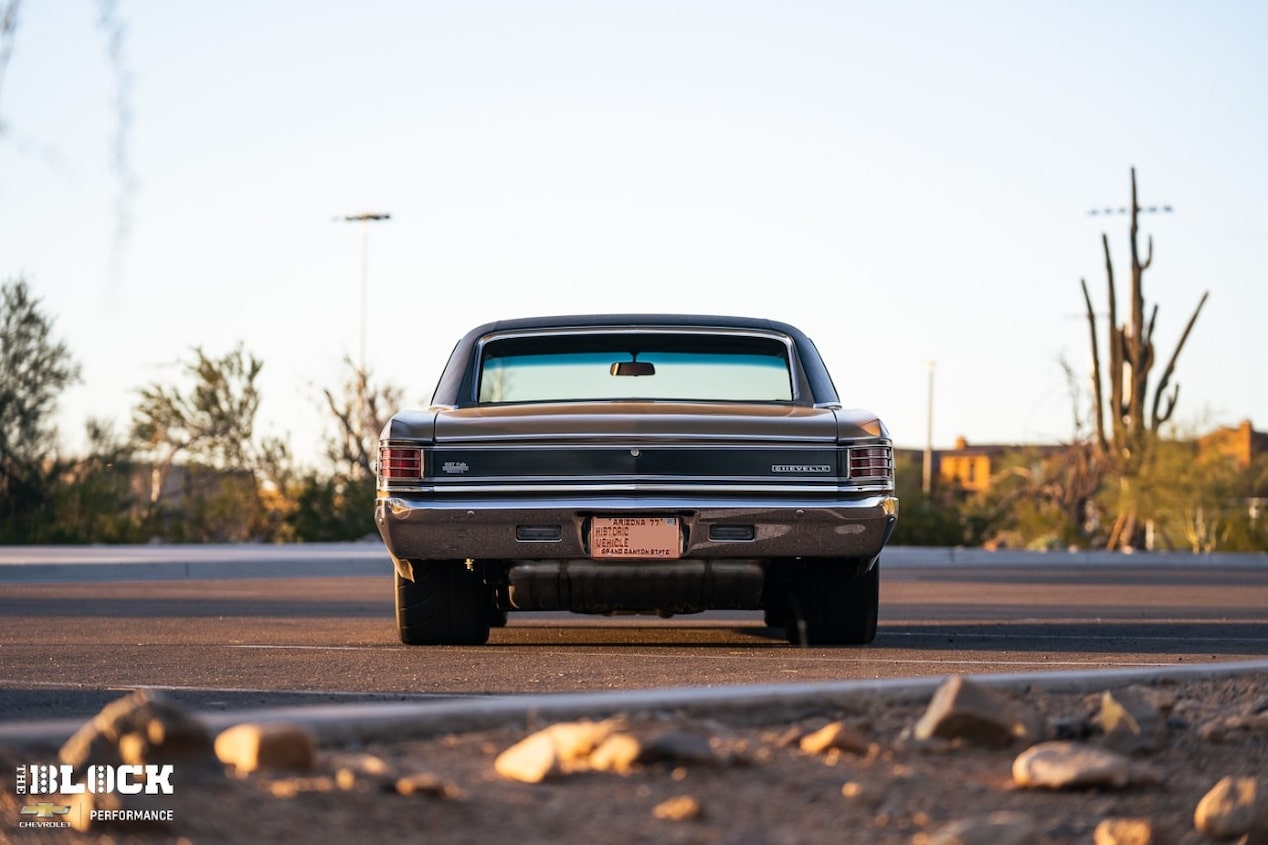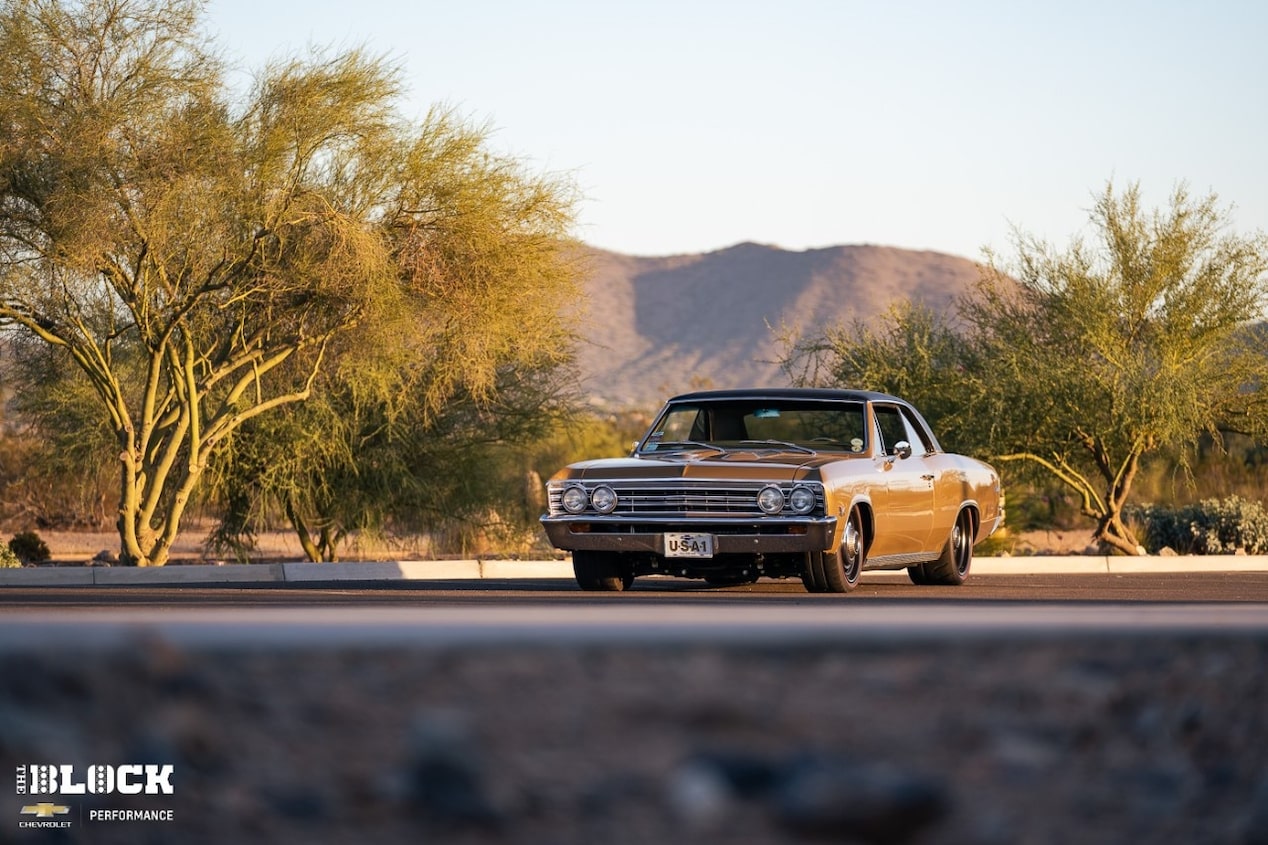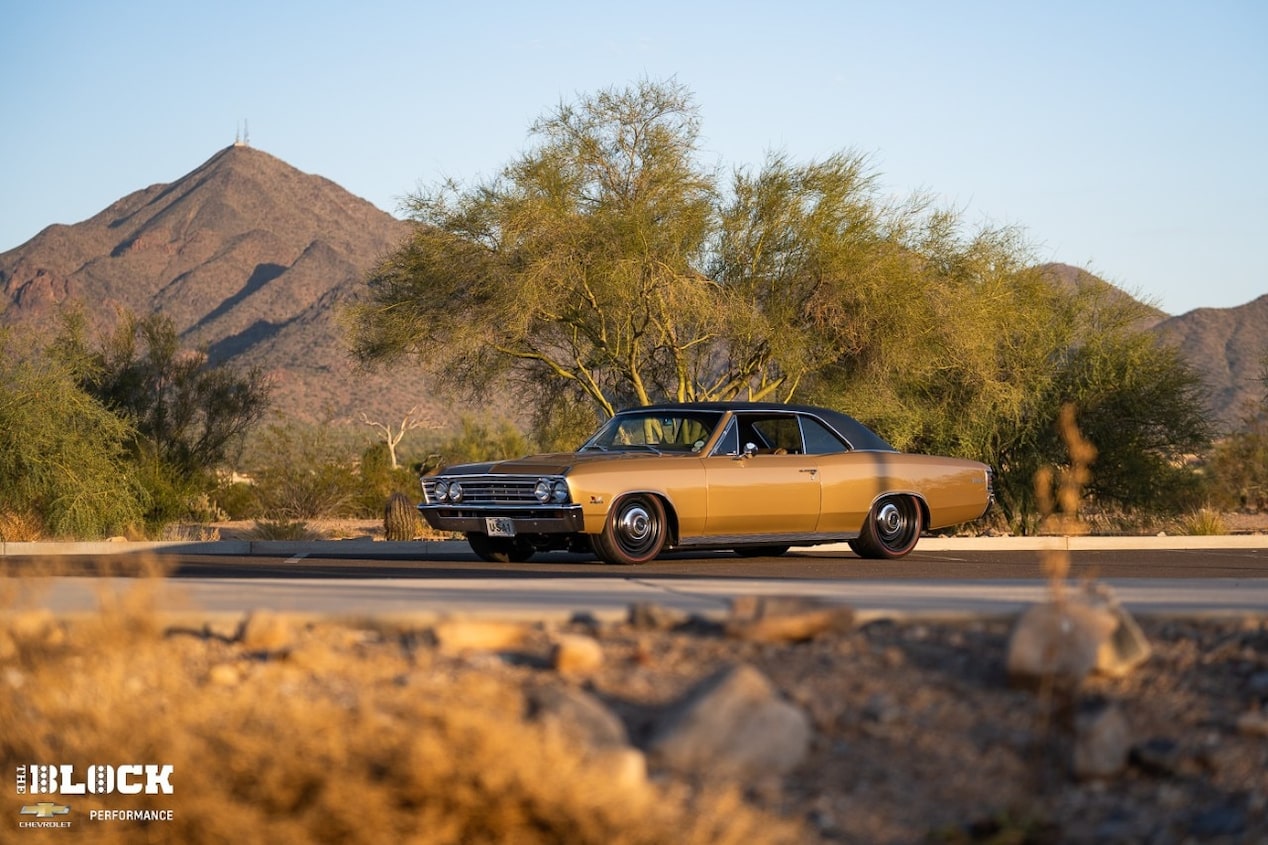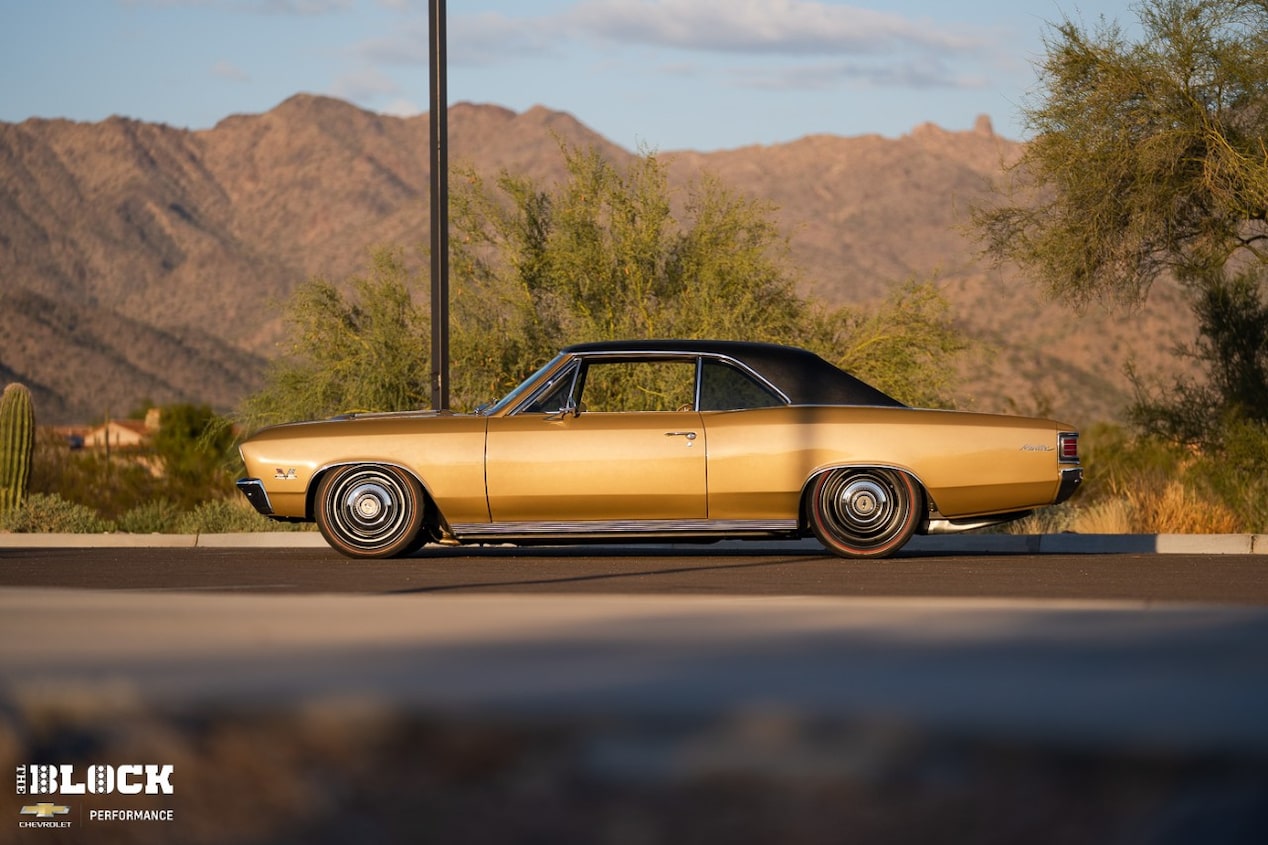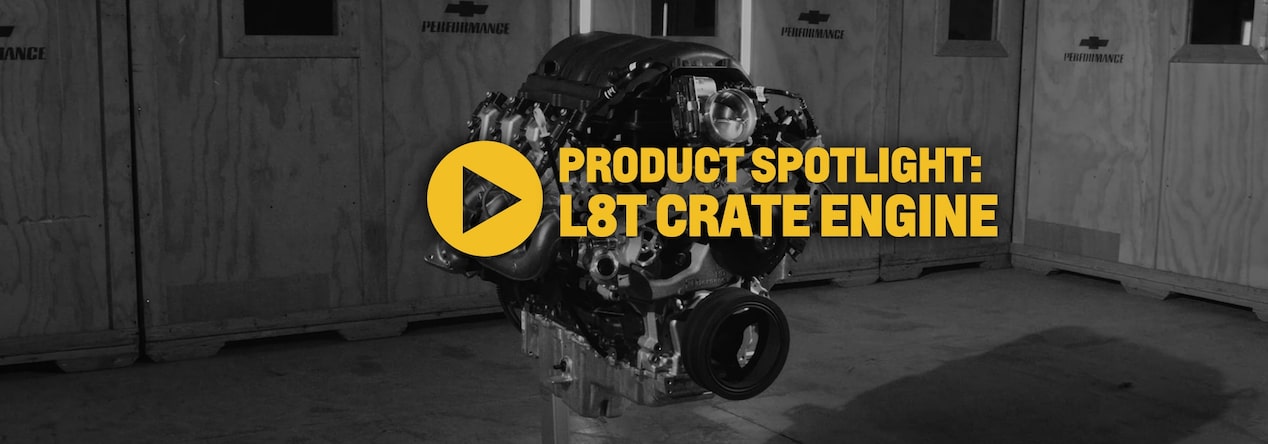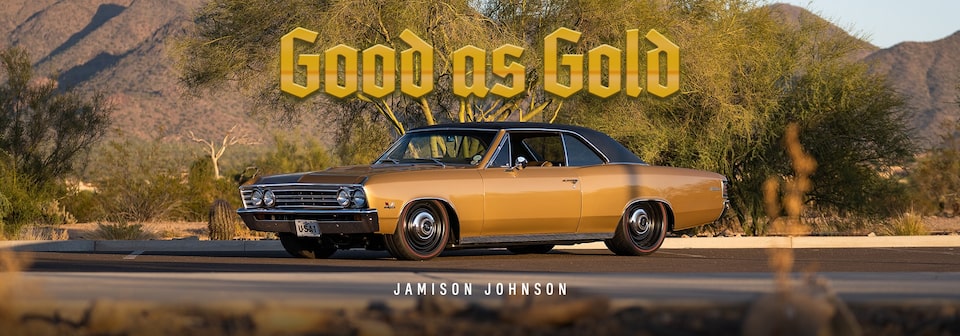
At the beginning of 2020, Jamison Johnson needed a favor. He had recently sold his LS1-swapped 1971 Chevelle, deciding he instead wanted to build a car to his liking. He'd even found a perfect candidate – a gold 1967 Chevelle Malibu – in the backwoods of Tennessee. But Jamison lives in Scottsdale, Arizona.
So he asked his close friend, Troy Gudgel of Illinois' BBT Fabrications, if he'd be willing to take a look at the car and bring it back to his shop if it was nice enough.
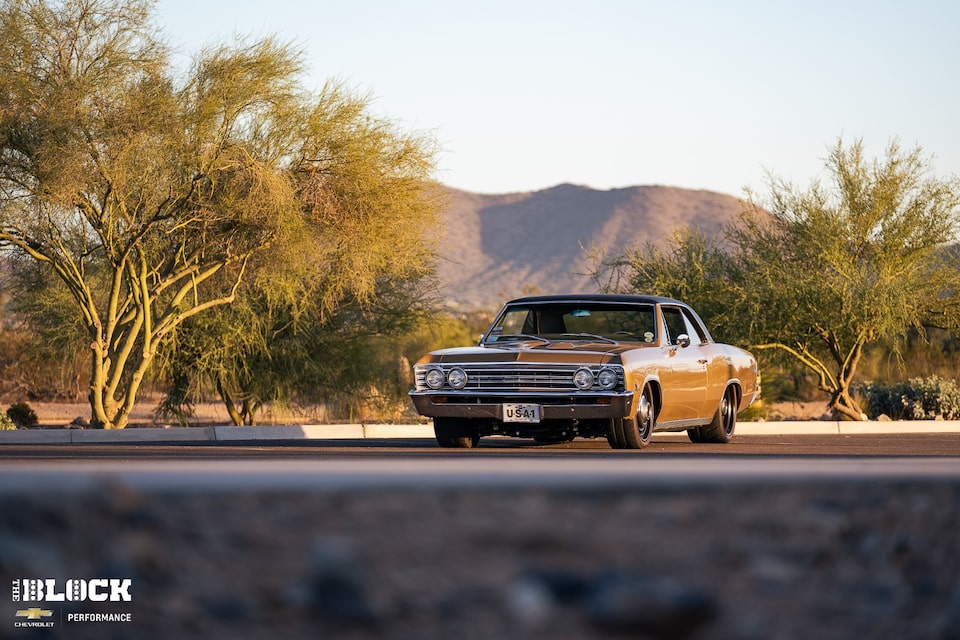
Jamison Johnson's LT1 crate engine*-powered 1967 Chevelle Malibu in Scottsdale, Arizona.
Troy ultimately put the Chevelle on his trailer, and the loading was quickly followed by a phone call between the friends to start discussing the plans and changes for the build. When Jamison bought the car, it had a simple 350 cu-.in. Small-Block Chevy with a Muncie four-speed transmission and 12-bolt rear end.
Today, the car is a prime example of classic muscle powered by modern technology thanks to its Chevrolet Performance LT1 crate engine.* Of course, BBT Fabrications was responsible for the project known as "Goldie."
The story represents both the trust and collaboration between two friends who met in kindergarten, and the ever-growing interest in utilizing the Gen V LT platform in restomod builds.

The Chevrolet Performance LT1 crate engine* under the hood of the Chevelle.
"It was kind of a no-brainer to have a newer, more modern motor in it."
"We were looking at an LS3 and LT1, and for me, it kind of became a no-brainer to have a newer, more modern motor in it," Jamison said during last November's Goodguys Speedway Motors Southwest Nationals in Scottsdale. "I felt like it kind of takes it to that next level. I really like the direct injection aspects of it, too, and obviously getting more horsepower out of an LT1 versus an [standard] LS3 to me made more sense."
Indeed, the 6.2L LT1 crate engine from Chevrolet Performance makes a stout 460 horsepower and 465 lb.-ft. of torque. As Jamison noted, the LT1 engine is the latest chapter in the Bowtie's storied Small-Block legacy, first appearing in the seventh-generation Corvette Stingray.
While the LT1 crate engine shares a similar architecture as the LS family, the LT1 power plant utilizes a unique block casting, cylinder head design and oiling system, among other features. Plus, direct injection and continuously variable valve timing are examples of the advanced technologies found in the LT1.

The car features custom "Chevelle" engine covers.
For Jamison, both the reliability factor of the LT1 crate engine and its easy power were appealing.
"It was kind of a new platform that we wanted to explore and didn't look back from there," he said.
The engine does feature a few additional aftermarket goodies in the form of a Brian Tooley Racing Stage 3 cam and valvetrain package, along with Ultimate Headers measuring one and ⅞" and a four-inch cold air intake custom-made by BBT Fabrications. Borla mufflers with three-inch exhaust add to the car's rumble.
With the upgrades, the Chevelle now makes 477 rear-wheel horsepower and 458 lb.-ft. of rear-wheel torque when tested on the dyno. A GM Genuine Parts Flex Fuel sensor also allows the engine to run E85 pump gasoline.
Additionally, a Bowler T56 six-speed manual transmission with a McLeod RST clutch helps put the power to the ground.

Jamison Johnson built the car alongside his close friend, Troy Gudgel of BBT Fabrications.
"In terms of teardown, reassembly, wiring … I was very involved in it."
Jamison is originally from the Champaign-Urbana area of Illinois and moved to Arizona with his family while he was in high school. He has many family and friends in Illinois though, including Troy Gudgel, whose BBT Fabrications shop is located in Mahomet.
With much of the world shut down while the car was being built in 2020, Jamison had ample opportunity to travel to Illinois and be involved in the building process.
"I stripped the car down and built a lot with Troy," Jamison said. "He and his guys handled a lot of the fabrication aspects of it. But otherwise, in terms of teardown, reassembly, wiring, all that kind of stuff, I was very involved in it."
Among the vehicle's major upgrades is a Roadster Shop SPEC chassis, which came with a variety of suspension components, a Ford nine-inch rear end and the necessary motor mounts.
"You tell them what motor package you want to do, they send it to you and it's pretty easy, to be honest," Jamison said. "It had all the modern Corvette suspension geometry in it, so that really appealed to me for what we wanted to do."

The LT1 is paired with a T56 six-speed manual transmission.
A bit of fabrication was required to make the LT1 work, but in Jamison's words, "nothing that was unexpected." Primarily, Troy and his team needed to modify the transmission and driveshaft tunnels because of the increased size of the accompanying T56 transmission.
Although the LT1 is a large engine, a 1967 Chevelle is a relatively big vehicle, so the power plant itself fit in the engine bay nicely. The engine also utilizes a Holley mid-mount front accessory drive system designed for clearance in swaps.
And perhaps the coolest part of a peek at the LT1 under the hood is seeing the custom "Chevelle" engine covers fabricated by the team at BBT.

The Chevelle features sticky Toyo rear rubber and all four tires have a red line from Diamond Back Classics.
"With the power from that LT1, I need to be able to put it to the ground."
Amazingly, Jamison and the BBT Fabrications team didn't touch the car's Granada Gold paint. Instead, Jamison preferred to leave it as is so he wouldn't need to worry about rock chips or blemishes.
There is one noticeable exterior modification though, with the rear mini-tubbed to allow for Toyo R888R 335/30/19 tires out back. The front rubber meanwhile is Nitto NT05 measuring 275/35/18. All four tires include a red line from Diamondback Classics.
"The rears are a really sticky tire because, with the power from that LT1, I need to put it to the ground," Jamison said. "Then I was able to get the red line added, which kind of completed the timeless, classic look."
The tires wrap around Forgeline OE1 wheels (18x10 front and 19x12 rear) with Chevelle caps, while a Wilwood Aero6 front and rear brake system featuring six-piston calipers brings the car to a stop.

The Chevelle's gold interior looks much as it would have in 1967.
" [The interior] is a little bit obnoxious, but also a little bit refined and I like that."
The car's gold interior is another of its standout features and the vast majority of it remains original. Updates include a color-matched CON2R steering wheel and ididit tilt steering column, Speedhut gauges, some reworking of the foam in the seats for more bolster, and a RetroSound radio with Rockford Fosgate speakers.
"I was unsure about the gold interior at first and Troy was like, ‘Man you've gotta do the gold interior. It's so awesome,'" Jamison said. "I'm so glad he talked me into it because I love it. It's a little bit obnoxious, but also a little bit refined and I like that."

Jamison and his wife, Lauren, were attending the Goodguys Speedway Motors Southwest Nationals together.
Jamison, who today works in the medical sales field, comes from a Chevy family and had his love for cars instilled in him by his grandfather, father and uncle.
In fact, for many years his uncle has restored and drag raced first-gen Camaros, and Jamison often accompanied him at the track with his cousin, Brent. Plus, as a kid, Jamison played with toy and radio-controlled cars and his passion grew from there.
That passion is still going strong as he takes part in the two Goodguys shows in Scottsdale each year. He was attending the fall event with his wife, Lauren, who also comes from a Chevy family and is involved in many tours with the car.
Troy Gudgel and BBT Fabrications were present at the November Goodguys event, too; their green 1969 Pontiac Firebird was on display for having been recognized as the Goodguys Street Machine of the Year. (The Firebird also won the Barrett-Jackson Cup "Ultimate Best in Show" award in January.)
A gray LS7-powered Chevelle built by the team was in Scottsdale during Goodguys as well.
As for Jamison's Chevelle, it was recognized as the Custom Chevelle Pick during the massive Goodguys Summit Racing Nationals in Columbus, Ohio, over the summer.

The gold Chevelle glistens in the Scottsdale sun during golden hour.
"We want to go enjoy it."
Jamison draws much inspiration from his friend Troy, whose shop is responsible for many high-end builds. The two Millennial-aged friends represent a burgeoning generation of enthusiasts who are putting their own stamp on the vehicles that first came to prominence during their parents' formative years.
Utilizing a modern power plant like the LT1 crate engine and Roadster Shop chassis are examples of how they are doing so. The result is that classic muscle maintains its timeless look, but performs like a vehicle built in the present day.
"We want to go enjoy it," Jamison said.
With his Chevelle "Goldie," he does just that.

A rear view of the 1967 Chevelle.
You can follow Chevelle on Instagram at @1gold67. Also, be sure to keep watching The BLOCK for many more Chevrolet Performance-powered builds from across the nation.
*Because of its effect on a vehicle's emissions performance, this engine is intended exclusively for use in competition vehicles. This engine is designed and intended for use in vehicles operated exclusively for competition: in racing or organized competition on courses separate from public streets or highways. Installation or use of this engine on a vehicle operated on public streets or highways is likely to violate U.S., Canadian, and state and provincial laws and regulations related to motor vehicle emissions.




